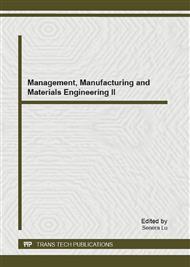p.500
p.508
p.514
p.521
p.526
p.532
p.537
p.542
p.547
Dynamic Co-Integration Analysis of the Relationship between Energy Consumption and Carbon Dioxide Emissions
Abstract:
The paper applies the Holt-Winter non-seasonal model to predict carbon dioxide emissions in the next five years and finds a rising trend. Then, through establishing a VAR model bases on the Granger causality test between carbon dioxide emissions and energy consumption, the application of the Johansen cointegration test finds that there is a long-term equilibrium between carbon dioxide emissions and energy consumption. This long-term equilibrium plays an “adjusting” role in the process of balancing dioxide emissions and energy consumption. It is obvious on the adjustment effect from short-term fluctuations to the long-term equilibrium. Finally, this paper puts forward corresponding policy proposals for China's low-carbonization of energy consumption.
Info:
Periodical:
Pages:
526-531
Citation:
Online since:
December 2012
Authors:
Keywords:
Price:
Сopyright:
© 2013 Trans Tech Publications Ltd. All Rights Reserved
Share:
Citation:


